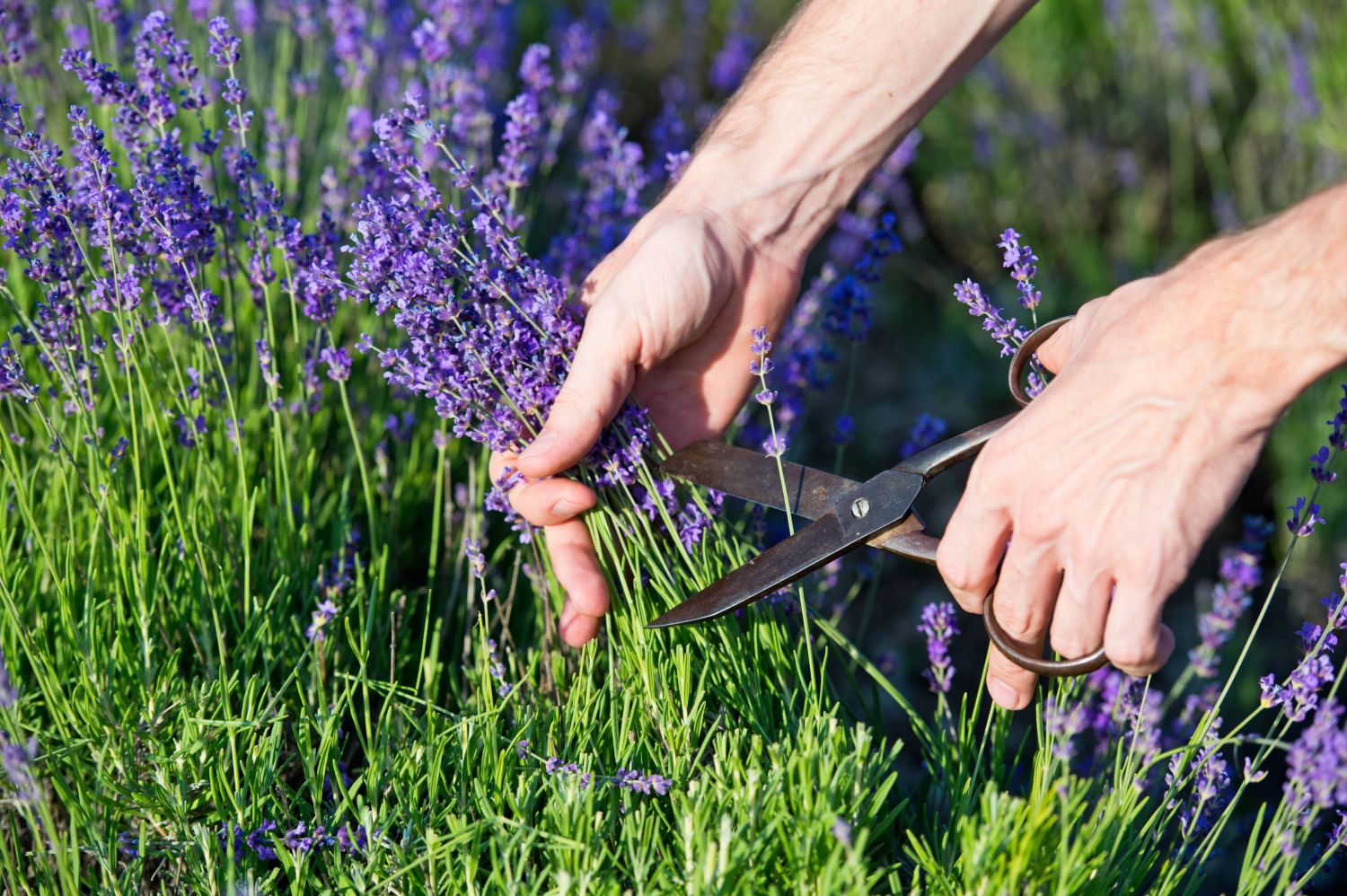1. The Ideal Time for Pruning
Early Autumn (End of August to Early September): After the main blooming period, pruning is ideal as the plant still has enough time to recover before winter. A light formative pruning in spring can also be helpful.
2. The Correct Pruning Technique
Cut Only into Green Wood: Prune only the green, young shoots and avoid cutting into old, woody parts, as lavender struggles to regrow from old wood.
Shape Pruning: Trim the plant by about one-third to achieve a dense, compact form. This helps the lavender grow bushy and produce abundant flowers the following year.
Avoid Radical Pruning: Be cautious not to prune lavender too severely—an overly drastic cut could hinder its growth.
3. Using the Right Tools
Clean Pruning Shears: Use sharp, clean pruning shears for smooth cuts that protect the plant from diseases.
4. Post-Pruning Care
Watering and Loose Soil: After pruning, lavender typically needs little water, but ensure the soil is well-draining.
Avoid Fertilizing: Lavender prefers nutrient-poor soil; fertilizing after pruning is not necessary.
With the right pruning, lavender stays compact, healthy, and full of blooms, adding its distinctive scent and beauty to your garden for years to come! 🌿🌸


I’ve been exploring for a little bit for any high quality articles or blog posts on this kind of area . Exploring in Yahoo I at last stumbled upon this web site. Reading this info So i’m happy to convey that I’ve a very good uncanny feeling I discovered just what I needed. I most certainly will make sure to do not forget this site and give it a look on a constant basis.
Keep working ,impressive job!
Hmm it seems like your site ate my first comment (it was super long) so I guess I’ll just sum it up what I submitted and say, I’m thoroughly enjoying your blog. I as well am an aspiring blog writer but I’m still new to the whole thing. Do you have any points for inexperienced blog writers? I’d definitely appreciate it.
I went over this site and I believe you have a lot of good info, saved to my bookmarks (:.
Hi, I think your site might be having browser compatibility issues. When I look at your website in Safari, it looks fine but when opening in Internet Explorer, it has some overlapping. I just wanted to give you a quick heads up! Other then that, fantastic blog!
Exactly what I was looking for, thankyou for putting up.
Your article helped me a lot, is there any more related content? Thanks!
https://t.me/s/Top_BestCasino/173
https://t.me/s/officials_pokerdom/3564
https://t.me/s/dragon_money_mani/9